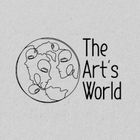











Item Details
Description
Oil on Masonite in the manner/style of Ernest Lawson. Our definition of “In the manner/style of”: The auction house believes that the work is done in the manner or style of the named artist and possibly after their lifetime, but the actual authorship is unknown. Dimensions: 30.48 x 40.64 cm. Artist information: Ernest Lawson (March 22, 1873-December 18, 1939) was a Canadian-American painter who exhibited his work at the Canadian Art Club and was a member of the American group The Eight, artists who formed a loose association in 1908 to protest against the narrow taste and restrictive exhibition policies of the conservative and powerful National Academy of Design. Although Lawson was primarily a landscape painter, he also painted a small number of realistic city scenes. His painting style is heavily influenced by the art of John Henry Twachtman, J. Alden Weir, and Alfred Sisley. Although considered a Canadian-American Impressionist, Lawson falls stylistically between Impressionism and Realism. Ernest Lawson was born in 1873 in Halifax, Nova Scotia into a prominent family, came to the United States in 1888, and settled in Kansas City. In 1891, he moved to New York and enrolled in classes at the Art Students League, studying under John Twachtman, who introduced him to Impressionism and was the central influence of his formative years. He later continued to study with Twachtman and with J. Alden Weir at their summer art school in Cos Cob, Connecticut in the 1890s. "To some extent," one art historian has noted, "Lawson was a product of the movement of the art colonies. Lawson visited France in 1893 and studied at the Académie Julian under Jean-Joseph Benjamin-Constant and Jean-Paul Laurens. He practiced painting outdoors in the south of France and in Moret-sur-Loing, where he met the English impressionist Alfred Sisley. In 1894 Lawson exhibited two paintings at the Salon. Lawson shared a studio in Paris that year with W. Somerset Maugham, who is believed to have used Lawson as inspiration for the character "Frederick Lawson" in his 1915 novel Of Human Bondage 2 Back in the United States, he married his ex art teacher, Ella Holman. Although his work was sought after by major collectors in the 1910s and 1920s, including John Quinn, Duncan Phillips, Albert C. Barnes, and Ferdinand Howald, who single-handedly built the modern collection at the Columbus Museum of Art, Lawson was unable to maintain A high profile in the American art world as a practitioner of Precisionism, artists in Alfred Stieglitz's circle (eg, Georgia O'Keeffe, John Marin, Charles Demuth), and others took center stage. Finally, he left New York. Lawson visited Florida when he became friends with Katherine and Royce Powell, his friends and patrons who lived there. He first stayed with them in Coral Gables in 1931, and returned there often, moving permanently to Florida in 1936. In his later years, he completed a mural for the post office in Short Hills, New Jersey (no longer in existence). ), but he focused primarily on painting the Florida landscape. Depressed and in failing health, he drowned under mysterious circumstances in 1939, apparently while swimming off Miami Beach. His friends wondered if Lawson's death had been a suicide. Lawson's work is little known today compared to that of many of his friends and associates, but his best paintings can be found in the collections of many North American art museums. Robert Henri insisted that, among landscape artists, he was "the greatest we have had since Winslow Homer." 10 Duncan Phillips referred to him as a "great romantic". 11 The Cathedral of Saint John the Divine, in Lawson's 1903 painting of the same title, stands in the middle of a forest not far from the Columbia University campus. His Washington Heights of spring foliage, glens and rowboats is today a prosperous, strongly urban Dominican neighborhood, teeming with people and buildings, the subject of the Broadway musical In the Heights. Lawson's paintings remind viewers of a world that completely disappeared in the space of a few decades. Provenance: Private collection; Nashville. Lots that do not carry established documented provenance, nor any past auction record are described in this catalog as "in the manner/style of". Pieces are being sold "As Is". No additional information regarding provenance will be provided after the auction. It is fully bidders' responsibility to check, read the description well and review the photos of this item or lot before bidding. Customers must agree to purchase our item acknowledging the descriptions presented. Shipping: Buyer pays shipping costs. We combine your shipping, if you buy more than one item. All shipments will be shipped by DHL EXPRESS, fast, easy and safe to track after we ship your item. Any questions, you can contact us 24/7.
Condition
Good Condition
Buyer's Premium
- 0%
ERNEST LAWSON - KENNEDY HOUSE, PULASKI - PAINTING - OIL ON MASONITE - IN THE STYLE OF
Estimate €15,000 - €30,000
Starting Price
€1,800
Get approved to bid.
Shipping & Pickup Options
Item located in Madrid, Madrid, ESOffers In-House Shipping
Payment

HAPPY DAY MOM! CHOOSE YOUR ARTWORK!
Madrid, Madrid, ES
Recommended Items
Related Searches
TOP
























































